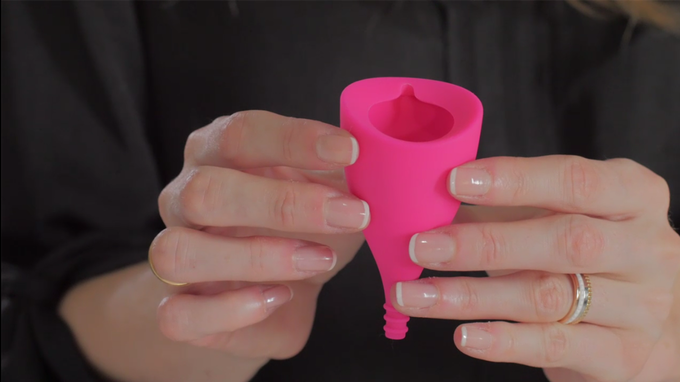
Menstruation is considered a natural phenomenon that usually occurs in girls during adolescence starting around the age of 12 years, with the amount of fluid and blood loss varying from one woman to another.
During their monthly periods, women go through a difficult time and can experience many problems due to changes in their hormones before and during menstruation. Often this causes them to worry about a possible abnormality.
Understanding various issues around the menstrual cycle is important to know which symptoms are serious and which ones can be ignored.
The following are some of the most common symptoms which menstruating women experience:
Acne Breakout and Swelling
Acne, zits, and pimples are common during menstruation as the sex hormones and androgen in the body increase during menstruation.
This makes the oil glands of the skin overactive causing the pores to clog.
Swelling and puffiness in the body during menstruation is caused by an increase in estrogen. The imbalance of hormones can lead to excessive accumulation of fluid in tissues. This results in water retention, which in turn creates puffiness and swelling, mostly in the legs, feet breasts, and stomach areas.
Painful Breasts
Painful and tender breasts during menstruation, often accompanied by swelling and heaviness is a condition that many women complain about.
These are quite common symptoms and occur due to hormonal changes and progesterone secretion. The symptoms clear on their own after menstruation.
Blood Clots
Women sometimes find small blood clots in their menstrual flow. These clots are a normal part of menstruation and are generally harmless. The blood clots may be dark red, bright red, brown, or black in appearance.
If you experience a larger volume of clots than you have in the past, it is important to consult your doctor immediately.
Bloated Stomach
A bloated stomach during menstruation is a common problem many women suffer from. A bloated stomach before and during the menstrual cycle is due to the fluctuation of hormones which cause fluid retention.
The bloated feeling in the abdominal area can be very annoying and uncomfortable but is a common symptom and nothing to worry about.
A rise in Body Temperature
Rising body temperature is another common symptom experienced during menstruation which is quite normal. The temperature of the body becomes warmer than normal due to hormonal fluctuations.
The base of the body temperature rises right after ovulation and continues to remain high several days before the following period.
Nausea and Vomiting and Headaches
During menstruation several women suffer from nausea and some even complain of vomiting. Nausea isn’t a serious problem but it can make you tired and weak. This happens due to prostaglandin production during the menstrual cycle.
A headache is one of the normal symptoms of menstruation. Progesterone and estrogen-only affect chemicals in the brain related to a headache before or during menstruation.
Loose Bowel Movements
In the first few weeks of menstruation some women experience loose bowel movements. Quite normal and occurs due to hormonal changes. Chemicals called prostaglandins are released by the body when menstruation starts.
Higher proportions of prostaglandins often cause more contractions and result in diarrhea like symptoms.
Brown Blood Discharge
The appearance of brown blood during discharge can be worrying, but it’s mostly harmless. Due to the blood remaining present in ovaries for a long duration of time, the blood discharge looks brown.
However, if the discharge is unbearably smelly or accompanied by cramping or vaginal itching it is important to rule out the possibility of an infection by consulting your doctor.
Managing Blood Flow Hygienically
Traditionally, pads are tampons pads pants were being used to manage blood flow during their periods. Nowadays, however, more women have been turning to menstrual cups as a convenient and safe alternative to a pad or tampon.
What is the Menstrual Cup?
A menstrual cup is inserted into the vagina to catch blood from your menstrual cycle and just one of these cups eliminates the need for using pads and tampons.
How to use it?
Generally a tampon wears out once you have it in for about four hours, and if you keep it in longer, you feel a stabbing pain. A tampon absorbs more than just your blood, it absorbs all the vaginal fluid and this can really disturb the bacterial and pH balance in your vagina.
Instead of changing it every four hours like a tampon or pad you can use a menstrual cup safely for up to 12 hours depending on your flow. You don’t have to worry about getting infected, which makes them an excellent choice when traveling.
Where to dump it?
Although using a menstrual cup requires you to dump out the contents of the cup into the toilet and then rinse it out in the sink, it’s a lot more hygienic than disposing of tampons and pads which eventually go into the landfill.
Depending on how well you take care of them, menstrual cups can easily last for 5 or more years, which is not only cost-effective but is good for the environment as well, considering how many tampons and pads get thrown away all over the world every day.
Also, you’ll never have to worry about facing a situation where you have to rush to a supermarket because you’re out of tampons or pads, just when you need them the most.















